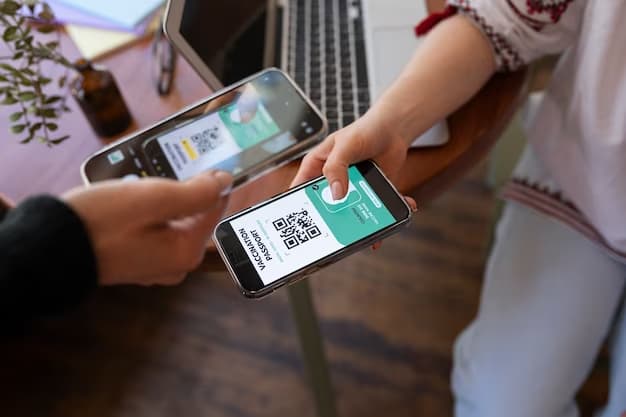QR codes, a type of advanced barcode, have become integral in various applications, including event check-ins. Each QR code contains unique data, linking to specific information about the event ticket, such as event details, registration date and time, the attendee’s name, and payment status.
Benefits of QR Code Check-In at Events
Implementing QR codes for event check-in can significantly streamline the process. Using an event management software with a QR code generator, attendees receive their tickets and unique QR codes directly via email. This system offers several benefits, including automated registrant identification, the option for digital or printed tickets, and instant confirmation of registration details.
Six Key Advantages of QR Codes for Faster Check-Ins
QR codes transform the event check-in experience, offering:
- Quick Identification: Eliminates the need for manual name searches;
- Accelerated Queue Movement: Reduces attendee wait time;
- Effective Tracking: Keeps a record of checked-in attendees;
- Ease of Use: Simple app-based scanning process;
- No Additional Equipment: Only requires a smartphone;
- Reduced Errors: Faster check-in leads to fewer mistakes.
Implementing QR Code Check-In for Event Attendees
Using event software like WildApricot, setting up QR code check-in is straightforward. The WildApricot For Admins app facilitates this process. Here’s how to implement it:
- Generate QR Codes: Automatically included in confirmation emails;
- Open Confirmation Email: Attendees access their QR code on a mobile device or printed ticket;
- Event Day Preparation: Volunteers download the WildApricot for Admin app for QR code scanning;
- Scan QR Codes: Check the validity of each registration upon scanning;
- Continuous Check-In: Efficiently process attendees with the option to scan additional codes.
Effective Techniques for Scanning QR Codes
To ensure smooth QR code scanning:
- For Mobile Devices: Increase screen brightness and zoom in on the QR code if necessary;
- For Printed Tickets: Flatten any creases, scan under direct light, and avoid scanning at an angle.
Addressing Common Questions About QR Code Check-In
- QR Code from Another Event: The system will not check in the attendee and will indicate the discrepancy;
- Previously Used QR Code: The app will notify that the attendee has already been checked in.
Comparative Table: Manual Check-In vs. QR Code Check-In
| Feature | Manual Check-In | QR Code Check-In |
|---|---|---|
| Speed | Time-consuming, slower processing | Rapid processing, less than 2 seconds per attendee |
| Accuracy | Prone to human error | Highly accurate, minimizes errors |
| Equipment Needed | Lists, clipboards, pens | Smartphone with a scanning app |
| Attendee Experience | Potentially frustrating due to delays | Smooth, efficient, and hassle-free |
| Data Management | Manual record-keeping | Automated data capture and analysis |
| Scalability | Limited, challenging for large events | Highly scalable, suitable for any event size |
This table offers a side-by-side comparison of manual check-in and QR code check-in methods, highlighting the differences in speed, accuracy, equipment needed, attendee experience, data management, and scalability.
How to Start a Fundraiser Event: Integrating QR Code Technology
Starting a fundraiser event involves several key steps, and incorporating QR code technology can significantly enhance the process:
- Define Your Fundraising Goals: Clearly articulate the purpose of your fundraiser and set specific targets;
- Select a Suitable Venue: Choose a location that aligns with your event size and theme;
- Plan Your Event Schedule: Outline the activities, speakers, and entertainment for your fundraiser;
- Implement QR Code Registration: Utilize QR codes for efficient registration and check-in. This allows attendees to register online and receive their unique QR codes for swift entry on the day of the event;
- Promote Your Event: Use various channels to advertise your fundraiser, including social media, email campaigns, and community outreach;
- Leverage QR Codes for Engagement: Integrate QR codes within your event for interactive elements, such as accessing event schedules, making donations, or participating in auctions.
By following these steps and incorporating QR code technology, you can ensure a successful and well-organized fundraiser event that not only meets your financial goals but also provides a memorable experience for attendees.
Conclusion
In conclusion, the integration of QR codes into event check-ins marks a significant advancement in managing attendee entry. This technology not only accelerates the check-in process but also enhances the overall attendee experience. Its efficiency, ease of use, and ability to provide instant feedback and validation make QR codes an essential tool for modern event management.
